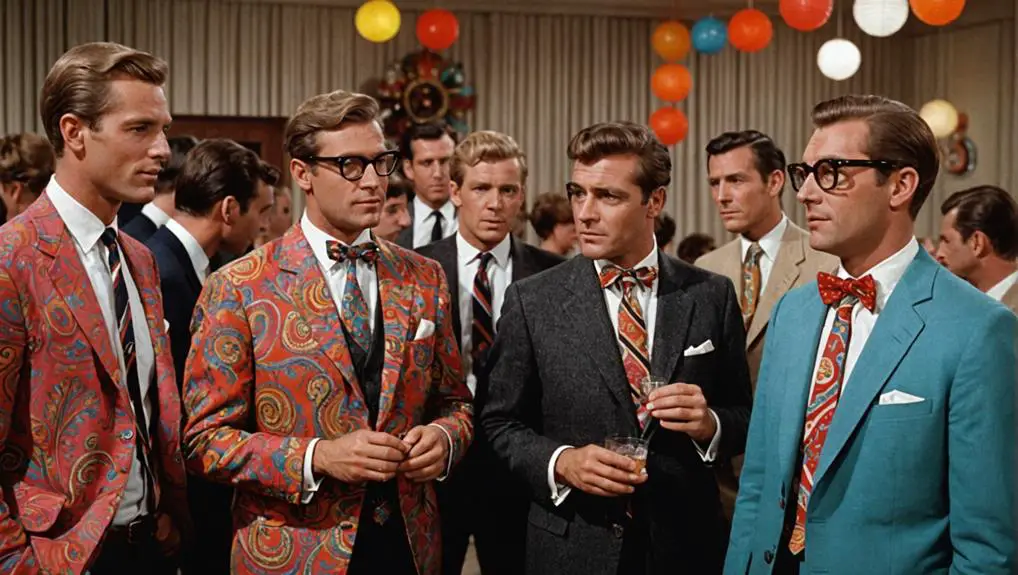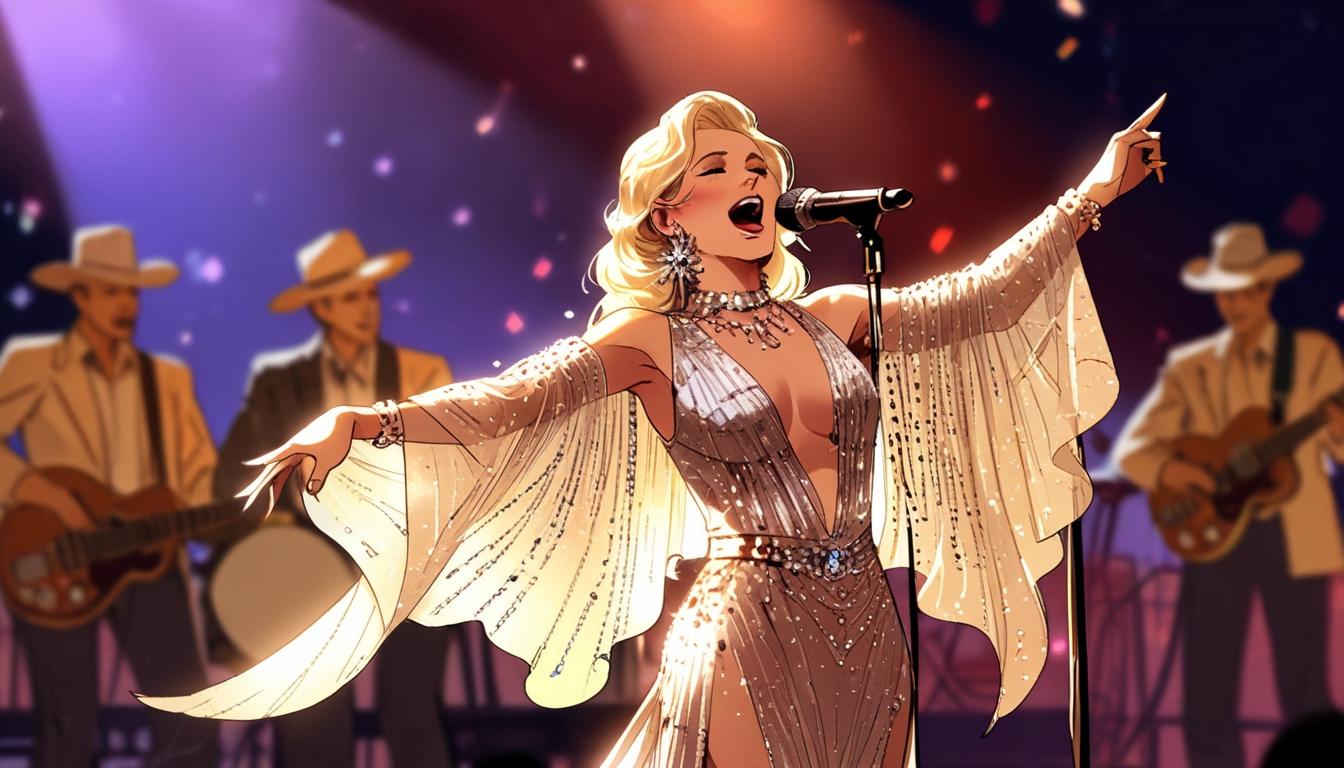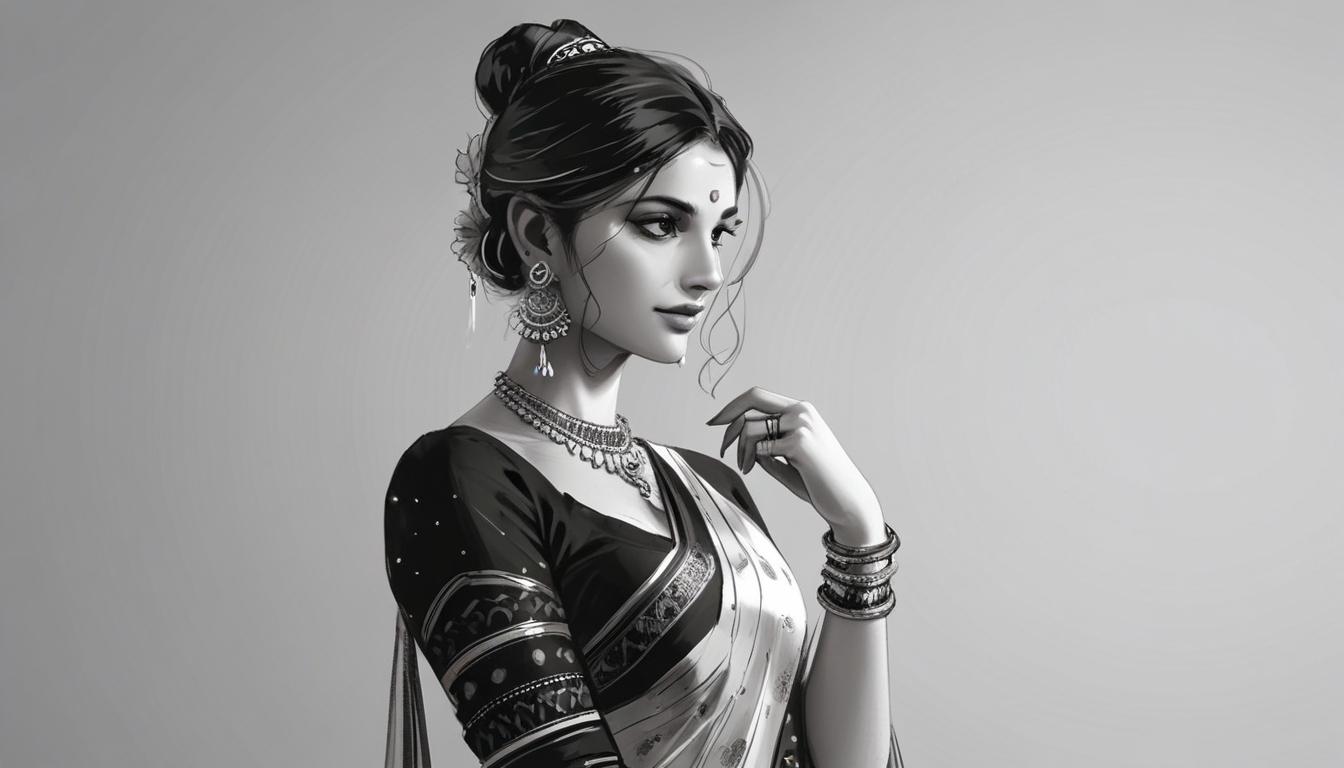In the 1960s, men's ties and bowties became vital fashion statements, reflecting personal style and cultural engagement. You'd notice skinny ties, measuring between 1.33 to 2.75 inches, dominating the scene with vibrant colors and bold patterns like florals and geometric shapes. Brands like Pierre Cardin and Robert Talbott led with innovative designs, while bowties gained popularity due to their versatility. This era's fashion mirrored significant social movements, with ties embodying youth culture and rebellion. As you explore further, you might uncover even deeper connections between these accessories and the cultural currents of the time.
Overview of 1960s Tie Trends
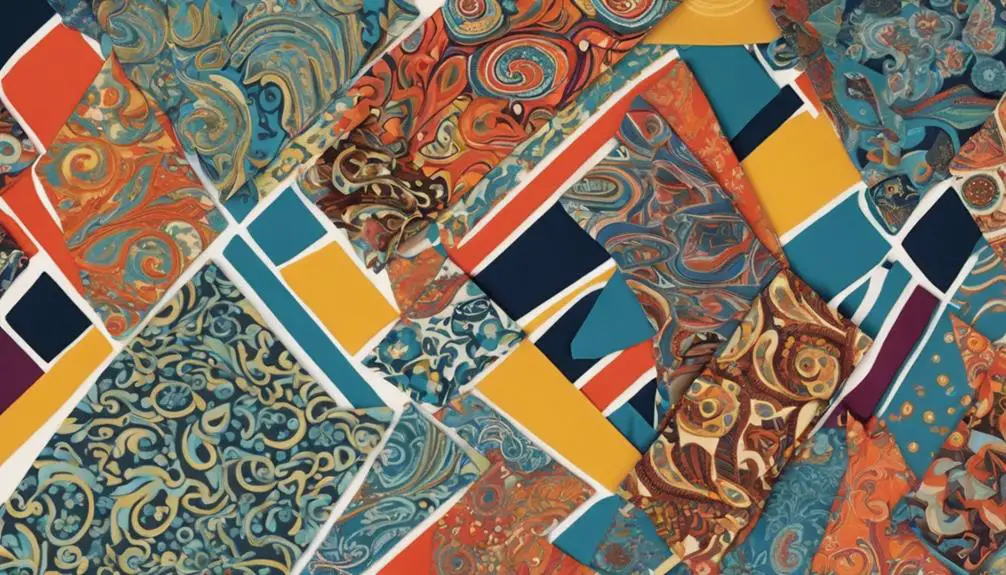
The 1960s marked a significant shift in men's fashion, particularly in tie trends that captured the essence of a dynamic decade. You'd notice the rise of skinny ties, which featured narrow widths ranging from 1.33 to 2.75 inches. This new style embodied modernity and youthful vibrancy, aligning perfectly with the cultural revolutions of the era. Silk emerged as a favored material, alongside wool and jacquard, allowing for a rich textural diversity.
Bold patterns dominated the landscape, with floral, striped, and solid color ties becoming staples in men's wardrobes. Mod ties, characterized by eye-catching prints and vibrant shades, reflected the decade's artistic movements. You'd see men confidently pairing these ties with tailored suits, showcasing their style and individuality.
Bow ties also gained prominence during this time, with clip-on varieties offering both convenience and flair for formal and casual occasions. The 1960s fashion scene was steeped in social dynamics, and ties became more than mere accessories; they were statements of identity and cultural engagement. In this transformative decade, ties were not just worn—they were integral to expressing the era's bold spirit.
Popular Tie Styles and Types
While exploring the vibrant fashion landscape of the 1960s, you'll find a diverse array of popular tie styles and types that reflect the era's cultural shifts and youthful exuberance. Skinny ties emerged as a significant trend, characterized by widths ranging from 1.33 to 2.75 inches. They became a staple for many, offering a sleek silhouette that complemented the decade's modern aesthetic. Understanding the vintage clothing characteristics associated with this era can enhance appreciation for these unique designs.
Mod ties also gained traction, featuring bold colors and geometric designs that echoed the vibrant culture of the time. These ties were often worn by the youth, conveying a sense of rebellion and individuality. Similarly, Rockabilly ties, typically skinny and adorned with eye-catching patterns, resonated with the energetic spirit of the era.
Bow ties enjoyed a resurgence, becoming fashionable for formal occasions and casual settings alike. You'd find a variety of styles, from pleated to floral patterns, appealing to diverse tastes. Additionally, knit ties introduced a textured option, offering a distinctive look for those seeking uniqueness. Vintage ties, including striped silk and fringed wool neckties, showcased traditional patterns while adding a layer of nostalgia to the 1960s fashion scene.
Fabric Choices and Patterns
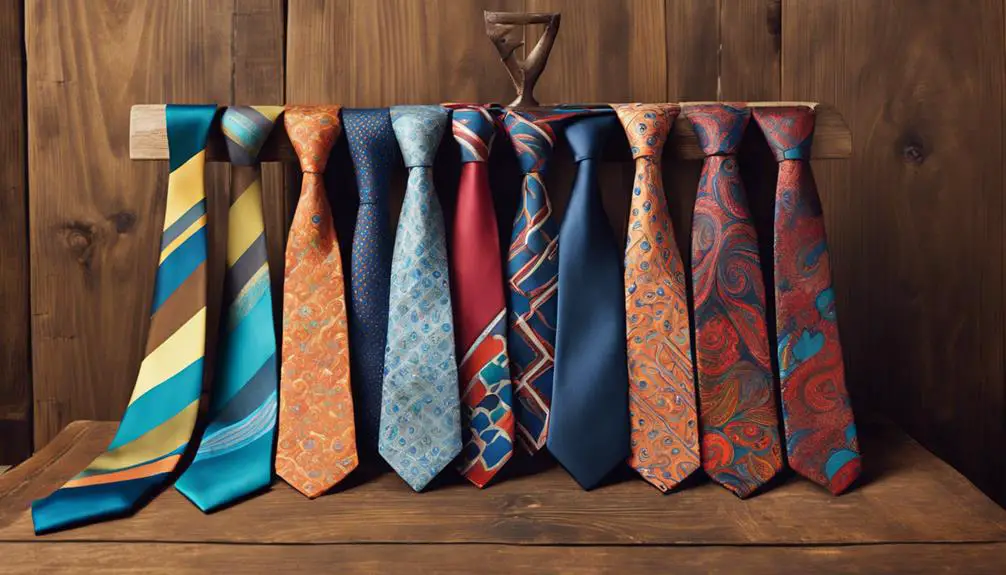
Fabric choices and patterns played a pivotal role in defining the aesthetic appeal of men's ties during the 1960s. The era favored luxurious materials like silk and jacquard, which provided a rich texture and vibrant colors, making ties not just accessories but statements of personal style. Wool also found its place, especially in cooler seasons, offering durability alongside elegance.
Skinny ties emerged as a dominant trend, typically measuring 1.5 inches wide. Their sleek silhouette complemented the fashion of the time, often crafted from lightweight fabrics that allowed for ease of wear. Patterns flourished, with floral designs, paisley motifs, and geometric shapes taking center stage. These patterns reflected the bold artistic influences of the decade, from abstract designs to playful images like golf players.
Vibrant colors such as berry red, navy blue, and olive green became staples, enabling men to express their personalities through creative combinations. The interplay of textures and patterns not only showcased individual taste but also aligned with the broader cultural shifts of the 1960s, marking a departure from conservative styles to a more expressive, dynamic approach in men's fashion.
Notable Brands and Designers
As the 1960s unfolded, various brands and designers emerged, shaping the landscape of men's ties and bowties with their distinctive styles and innovative approaches. Pierre Cardin stood out for its avant-garde designs, utilizing luxurious materials that redefined the silk necktie. This brand epitomized the era's shift toward modernity and sophistication. Meanwhile, Robert Talbott gained recognition for his handcrafted ties, which combined exceptional craftsmanship with unique patterns, appealing to discerning customers seeking quality.
The Countess Mara brand became synonymous with elegance, offering neckties that featured bold colors and intricate designs, attracting fashionable men enthusiastic to make a statement. Their ties often included whimsical motifs, reflecting the decade's playful spirit. Beau Brummel also made a mark during this period by focusing on classic styles infused with a modern twist. Their neckties and bowties became favorites among trendsetters, blending tradition with contemporary flair.
Vintage ties from these brands provide a glimpse into 1960s aesthetics, showcasing popular designs like paisleys, stripes, and floral patterns. By examining these notable brands and designers, you gain valuable insight into how they influenced men's fashion during this dynamic decade.
Historical Context of Men's Fashion
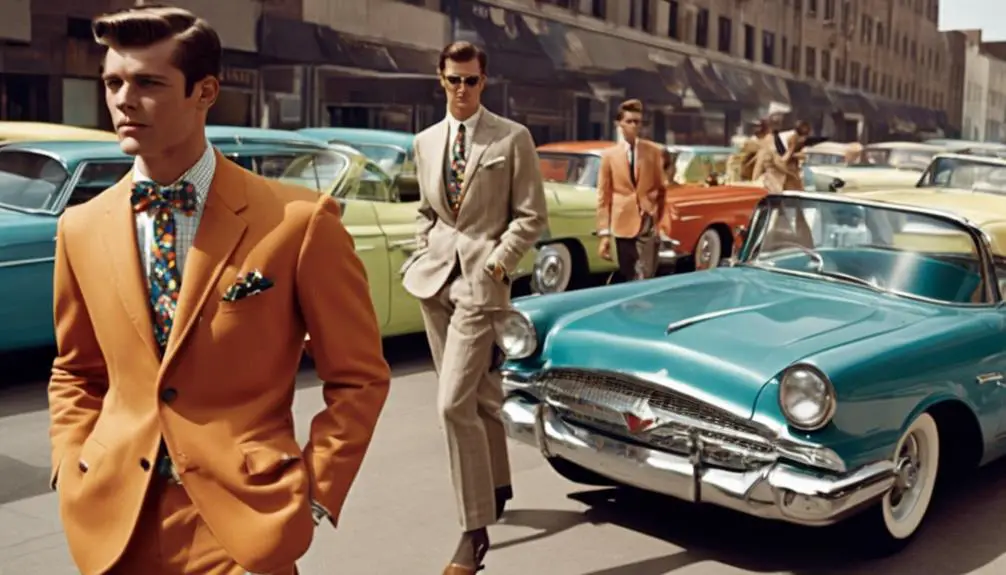
The 1960s brought a remarkable transformation in men's fashion, driven by a confluence of cultural, political, and technological factors. This era saw the rise of skinny ties, which perfectly encapsulated the modern and youthful aesthetics that defined 1960s fashion. Influenced by movements like Mod and Rockabilly, ties showcased bold colors and geometric patterns, making them vibrant expressions of individuality. The introduction of polyester fabrics allowed for these innovative designs, enabling ties to feature paisley and floral motifs in a way that was previously unattainable.
Historical events, such as the Civil Rights Movement and the Vietnam War, contributed to a more expressive fashion scene where ties became canvases for personal statements. Men wore these accessories not just for style but to reflect their beliefs and social consciousness. Popular culture figures, including Frank Sinatra and The Beatles, further propelled various tie styles into the mainstream, making them essential components of a polished, trendy look. In this dynamic landscape, ties evolved from mere accessories to powerful symbols that represented the spirit of the times, embodying the desire for freedom, expression, and individuality that characterized the decade.
Bowties and Their Evolution
Bowties emerged as a fashionable alternative to traditional neckties during the 1960s, appealing to men who sought a distinctive and sophisticated look. This decade marked a significant evolution in bowtie styles, with oversized clip-on versions gaining traction for their convenience. You'd find these bowties at formal events, showcasing a blend of luxury and flair.
The materials used were primarily silk and polyester, which not only provided a soft touch but also allowed for vibrant colors that complemented the bold fashion trends of the time. The designs ranged from classic solid colors to playful patterns, such as plaid and floral, reflecting the eclectic spirit of the era. Notable brands like Pierre Cardin played a vital role in shaping this trend, offering high-quality options suitable for both formal and casual occasions.
| Style | Description |
|---|---|
| Clip-On | Easy to wear, oversized design |
| Silk | Luxurious feel, vibrant colors |
| Patterns | Plaid, floral, playful designs |
| Pierre Cardin | High-quality, fashionable options |
In essence, bowties in the 1960s weren't just accessories; they were statements of individuality and style.
Pricing and Collectibility
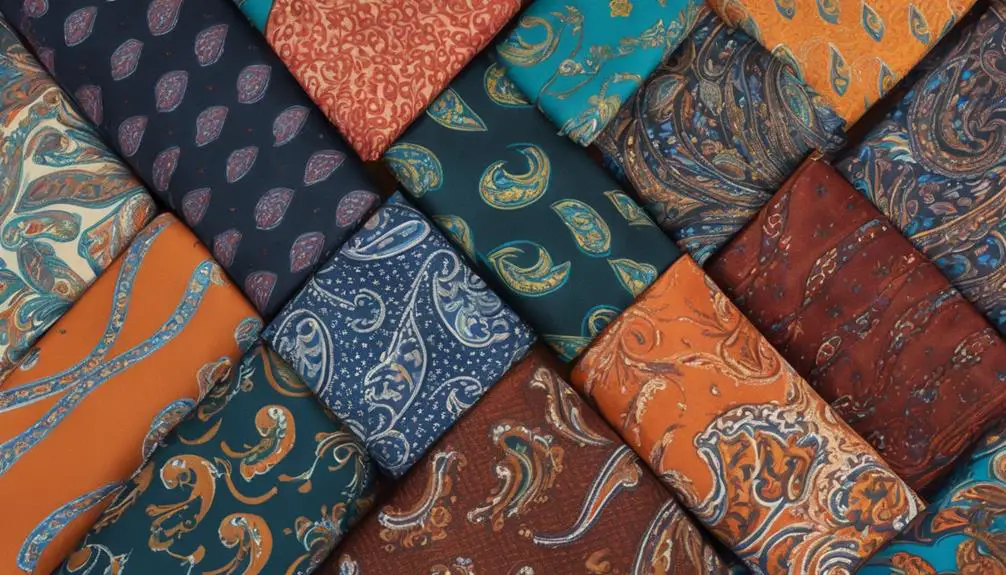
Vintage ties from the 1960s present a fascinating intersection of fashion and investment potential, attracting collectors and enthusiasts alike. Pricing for these ties varies considerably, ranging from as low as $0.99 to a striking $199.99 for unique designs or rare finds. On average, you'll find ties priced around $17.99, making them accessible options for collectors. Many choices are available for under $10.00, enhancing their appeal.
Collectibility is particularly heightened by the presence of renowned brands like Pierre Cardin and Robert Talbott, which are often in high demand among vintage tie aficionados. The market has seen a surge of interest, especially for items that resonate with the considerable fashion trends of the 1960s. This growing enthusiasm contributes to the potential investment value of these ties.
When considering your purchase, remember that shipping costs typically range from $3.75 to $10.00, although some listings may offer free shipping, further sweetening the deal. Whether you're looking to enrich your wardrobe or invest in a piece of history, the world of vintage ties holds exciting opportunities for both style and financial gain.
Cultural Influences on Tie Designs
As collectors explore the pricing and collectibility of 1960s ties, they'll find that the designs themselves are deeply rooted in the cultural upheaval of the era. The emergence of skinny ties marked a shift towards modernity, driven by the youth-centric counterculture movement. These ties, often crafted from luxurious silk, featured bold colors and intricate patterns that mirrored the vibrant artistic movements like Pop Art.
The Rockabilly style also played a significant role, with ties displaying eye-catching motifs that drew from Americana and nostalgic elements. This fusion of influences created a unique aesthetic, appealing to a generation seeking self-expression through fashion.
Additionally, the rise of the Mod subculture in Britain introduced clean lines and geometric patterns, further enriching the tapestry of tie designs. This era saw a heightened appreciation for quality craftsmanship, as consumers gravitated towards ties that not only represented their cultural shifts but also showcased meticulous artistry.
Ultimately, the 1960s ties encapsulate a dynamic interplay of social movements and design innovation, making them highly collectible artifacts of a transformative decade in men's fashion.
Frequently Asked Questions
How Wide Were Ties in the 1960s?
Ties in that decade typically measured between 1.5 and 2.75 inches in width. This range reflected evolving fashion trends, emphasizing a youthful aesthetic that encouraged individuality and vibrant expressions through bold colors and patterns.
When Did Men Start Wearing Bowties?
You'll find that men started wearing bow ties in the late 19th century, gaining traction through the early 20th century. Their popularity surged considerably during the 1960s, thanks to cultural icons and evolving fashion trends.
Were Bow Ties Popular in the 1970s?
Yes, bow ties became highly popular in the 1970s, showcasing bold patterns and vibrant colors. They reflected the era's eclectic fashion, appealing to both formal and casual wear, allowing you to express individuality and creativity.
When Was the Bow Tie Most Popular?
The bow tie reached its peak popularity during the 1960s, becoming a fashionable choice for various social occasions. Its distinct styles and associations with prominent figures solidified its status as a sophisticated accessory during that era.
